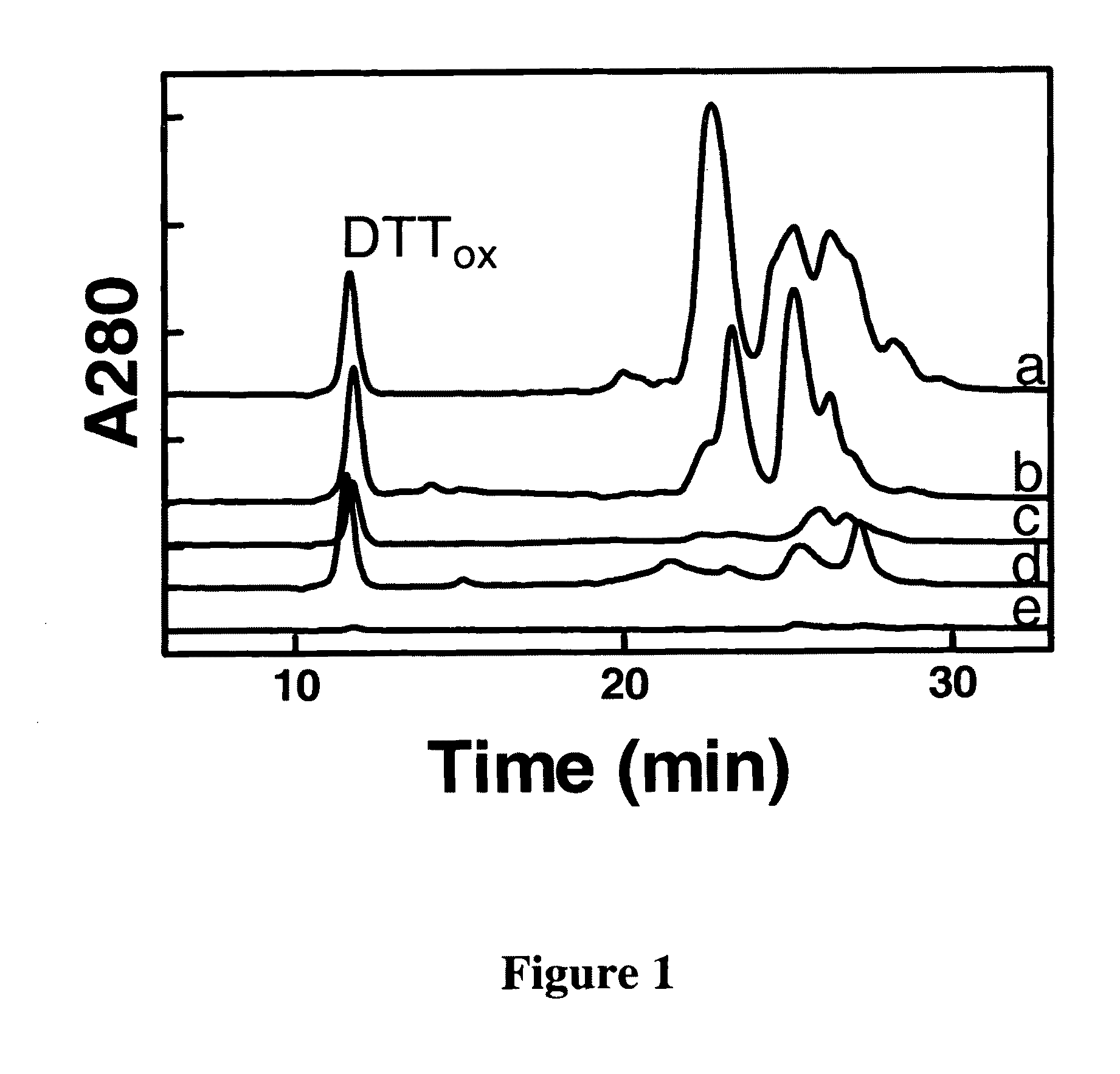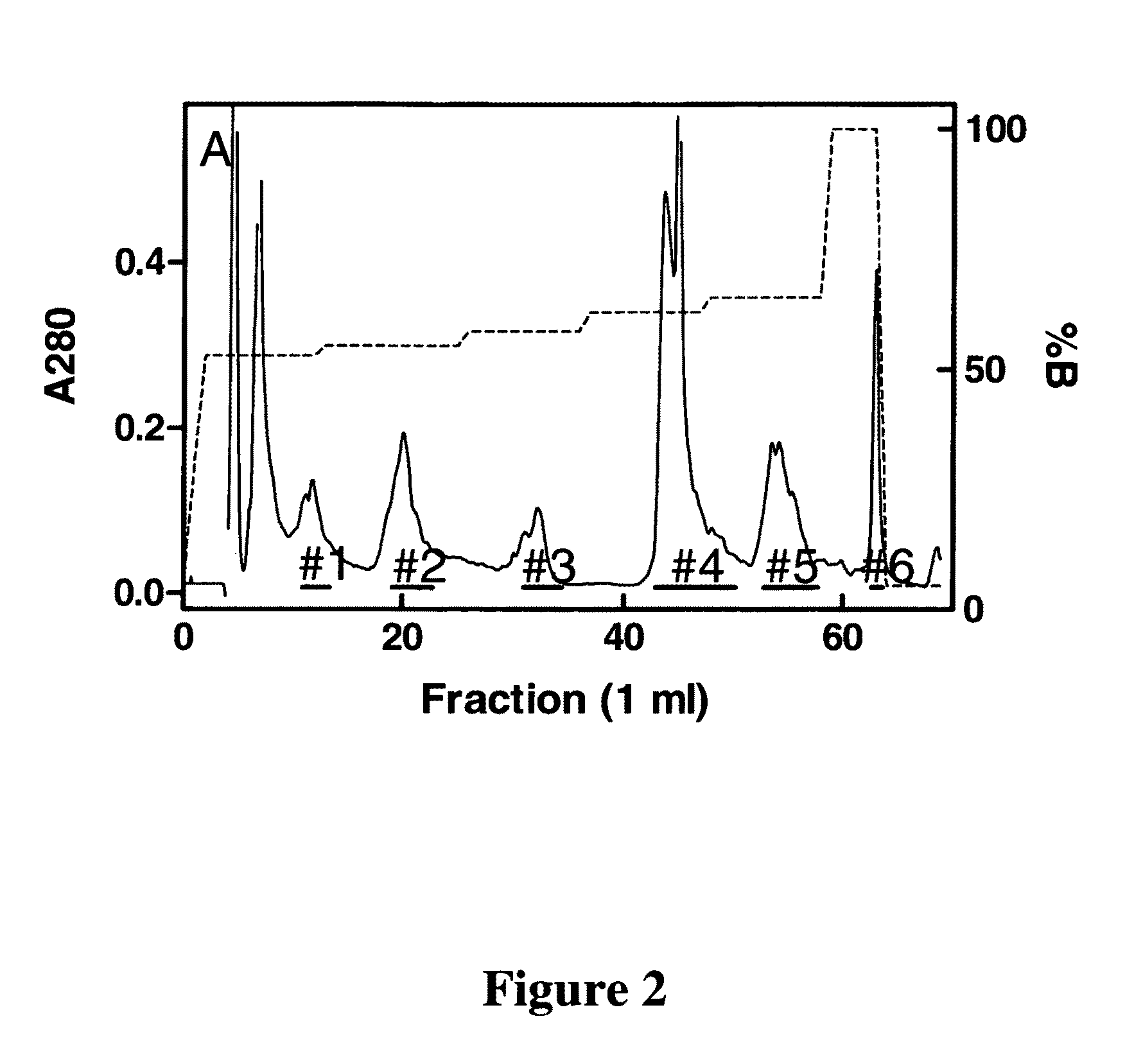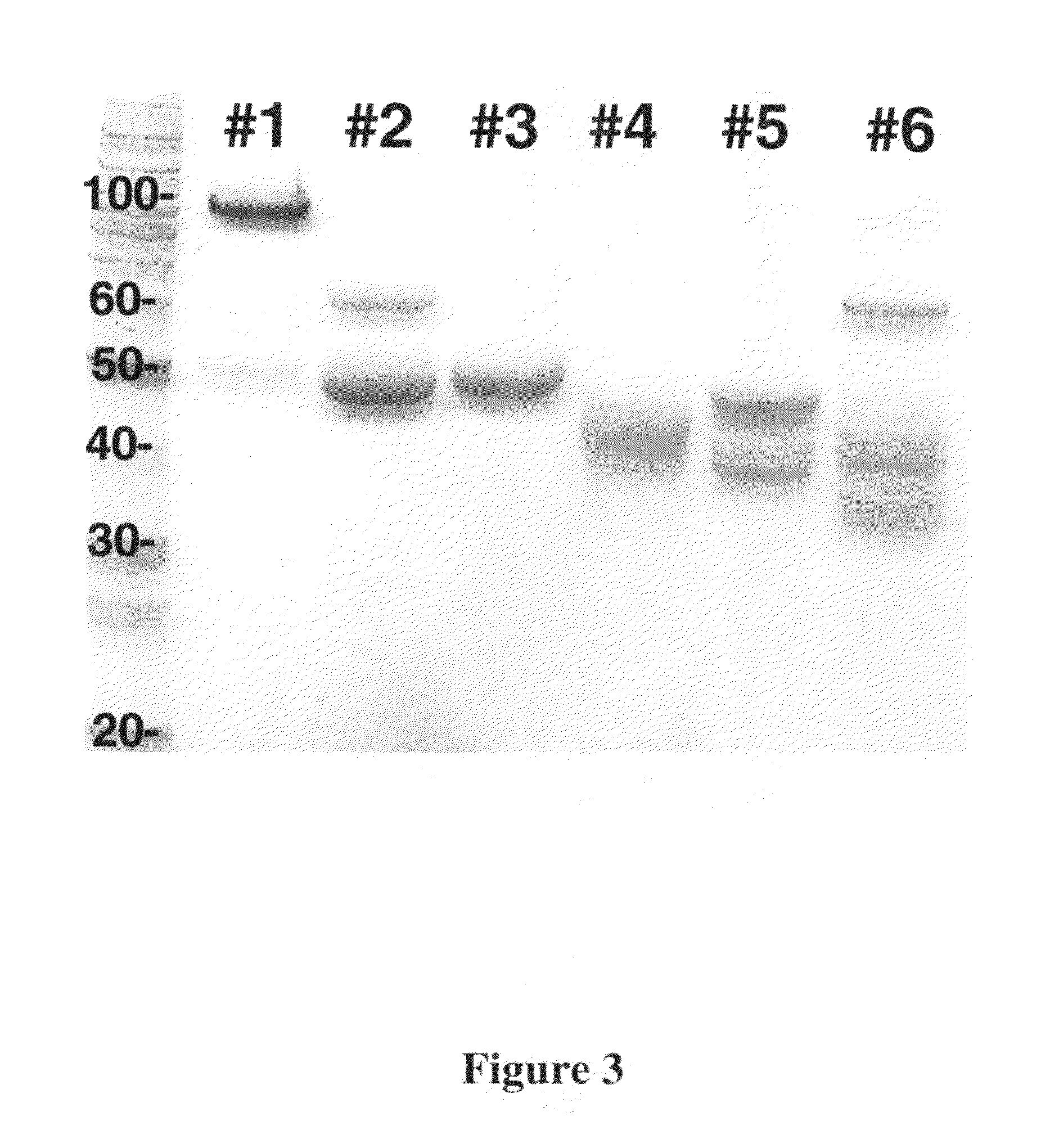Barley with low levels of hordeins
a technology of hordein and barley, which is applied in the field of barley with low hordein levels, can solve the problems of destroying villi, affecting the hygroscopicity of coeliac disease, so as to prevent or reduce the incidence or severity of coeliac disease, and reduce the risk of triggering disease symptoms
- Summary
- Abstract
- Description
- Claims
- Application Information
AI Technical Summary
Benefits of technology
Problems solved by technology
Method used
Image
Examples
example 1
Materials and Methods
Isolation and Purification of Prolamin
[0215]To isolate prolamins from cereals, whole-meal flour (10 g) was stirred for 30 min at 25° C. in 200 ml of buffer containing 20 mM triethanolamine-HCl (TEA), 1% (w / v) sodium ascorbate, 1% (w / v) polyethylene glycol (MW 6000; PEG6000) and 200 μl of plant protease inhibitor cocktail (Sigma #P9599), all adjusted to pH 8. The suspension was centrifuged at 7,000 g for 15 min and the pellet washed twice more to remove proteins soluble in aqueous buffer. Prolamins in the washed pellet were dissolved in 40 ml of 50% (v / v) propan-2-ol containing 1% (w / v) dithiothreitol (DTT), 1% (w / v) PEG6000, 1% (w / v) sodium ascorbate by stirring for 30 min at 25° C. The suspension was centrifuged and prolamins precipitated from the supernatant with 2 volumes of propan-2-ol and stored at −20° C. When required, an aliquot equivalent to 10 g of flour was sedimented by centrifugation at 160 g at 4° C. for 10 min, the pellet redissolved in 10 ml of b...
example 2
Toxicity of Barley Hordeins to Coeliacs
Prolamin Composition of Barley and Other Cereals
[0230]Prolamins were isolated as aqueous-alcohol soluble proteins from the coeliac toxic cereals, barley and wheat, the less toxic oats and non-toxic maize and purified by one round of RP-FPLC as described in Example 1. The protein elution profiles of the prolamins as determined by A280nm in the RP-FPLC (FIG. 1) showed a series of partially resolved peaks due to individual proteins eluted by the steeply increasing solvent gradient. Fractions containing protein from 10 purifications for each cereal were combined and lyophylised. The typical yield of prolamin from various cereals (2 g) was: maize, 10 mg; oats, 23 mg; barley, 73 mg; and wheat, 114 mg. The total prolamins from each cereal were lyophilized and stored for testing in the ex vivo T-cell assay (below). Solvent controls were also prepared from the RP-FPLC procedure.
[0231]The barley prolamins (hordeins) were also fractionated by RP-FPLC as d...
example 3
Production of Barley Grain Reduced for Both B and C Hordeins
[0244]A number of barley mutants affected in hordein synthesis or accumulation have been identified previously. These barley mutants were not isolated for the purpose of reducing hordeins in the grain, but were isolated and selected for increased lysine levels in the grain and subsequently found to be reduced for hordeins.
[0245]The mutant Riso 7, first described by Doll et al. (1976), was identified after fast neutron treatment of the parent Bomi. It contained a recessive mutation in a gene that resulted in a 29% decrease in prolamins and a 10% increase in the lysine content of protein relative to Bomi. The reduction in the lysine-poor prolamins was compensated for by an increase in other, relatively lysine-rich storage proteins, resulting in elevated lysine content. The grain yield and starch content were reduced by 6% and 7%, respectively, compared to the parent (Talberg, 1982; Doll, 1983).
[0246]Riso 56, first described b...
PUM
| Property | Measurement | Unit |
|---|---|---|
| molecular weight | aaaaa | aaaaa |
| weight | aaaaa | aaaaa |
| weight | aaaaa | aaaaa |
Abstract
Description
Claims
Application Information
 Login to View More
Login to View More - R&D
- Intellectual Property
- Life Sciences
- Materials
- Tech Scout
- Unparalleled Data Quality
- Higher Quality Content
- 60% Fewer Hallucinations
Browse by: Latest US Patents, China's latest patents, Technical Efficacy Thesaurus, Application Domain, Technology Topic, Popular Technical Reports.
© 2025 PatSnap. All rights reserved.Legal|Privacy policy|Modern Slavery Act Transparency Statement|Sitemap|About US| Contact US: help@patsnap.com



